
String of Pearls Growing, Propagation and Caring Guide Plants Spark Joy
String of Pearls is a member of the plant family Asteraceae, or the daisy family, which comprises over 32,000 species of flowering plants. Origins and History The string of pearls is native to dry areas of southwestern Africa. In this native habitat, the plant's vines creep along the earth, weaving together to form a thick ground cover.

Captive Creativity String of Pearls (Senecio rowleyanus) Plant Care
Learn how to grow string of pearls plants, unique vining succulents with tiny pea-shaped leaves, in pots or hanging baskets. Find out how to prune, propagate, pot, and overwinter this plant, as well as its common problems and benefits.

String of Pearls I Senecio rowleyanus Plant Delivery UK Bloombox Club
The string of pearls plant grows well in bright light, including sunlight. You should provide this string of beads houseplant with average indoor temperatures around 72 degrees F. (22 C.) throughout its active growth. During its dormancy, however, you'll need to provide cooler conditions, generally somewhere between 50 to 55 degrees F. (10-13 C.).
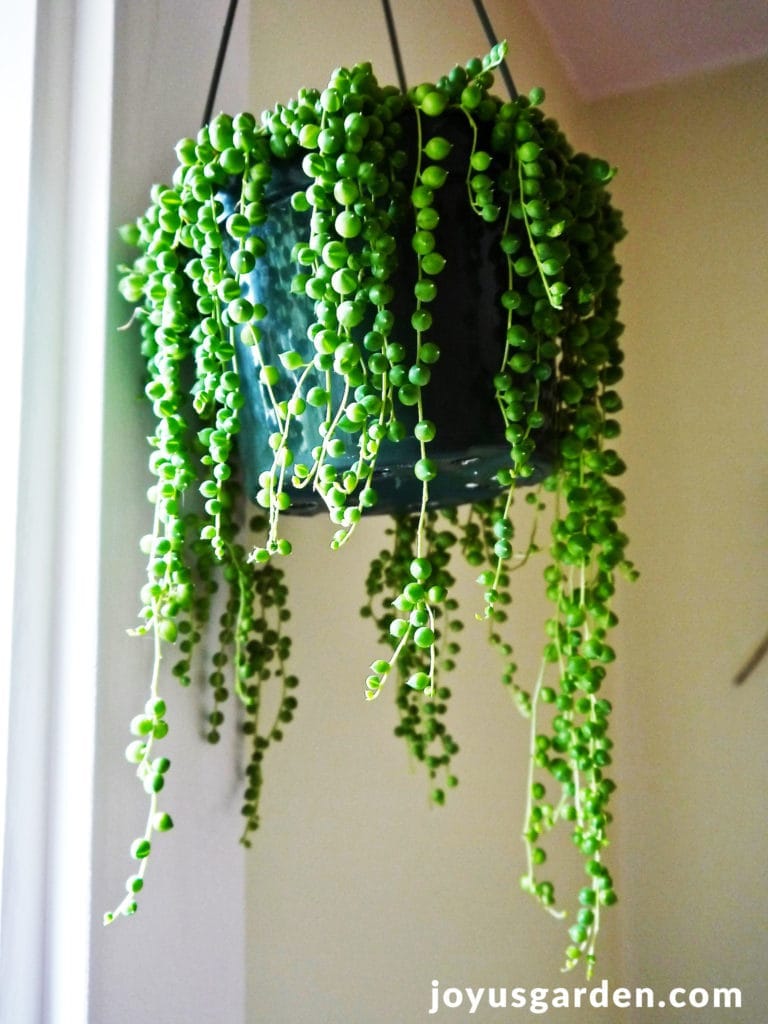
10 Reasons Why Your String Of Pearls Isn't Growing Indoors
String of Pearls Care at a Glance Common Name: String of pearls, string of beads Scientific Name: Curio rowleyanus (formerly Senecio rowleyanus, Kleinia rowleyana) Soil: Cactus potting mix.
:max_bytes(150000):strip_icc()/kararileystringofpearls-8-02a216f00a3945b4af36746867343027.jpg)
How to Grow and Care for String of Pearls Plant
A Complete Guide to String of Pearls: Care, Propagation & Repotting Download Article How often should you water your string of pearls? Co-authored by Janice Tieperman Last Updated: May 18, 2023 Fact Checked General Care | Propagating | Repotting | Tips | Warnings | Things You'll Need
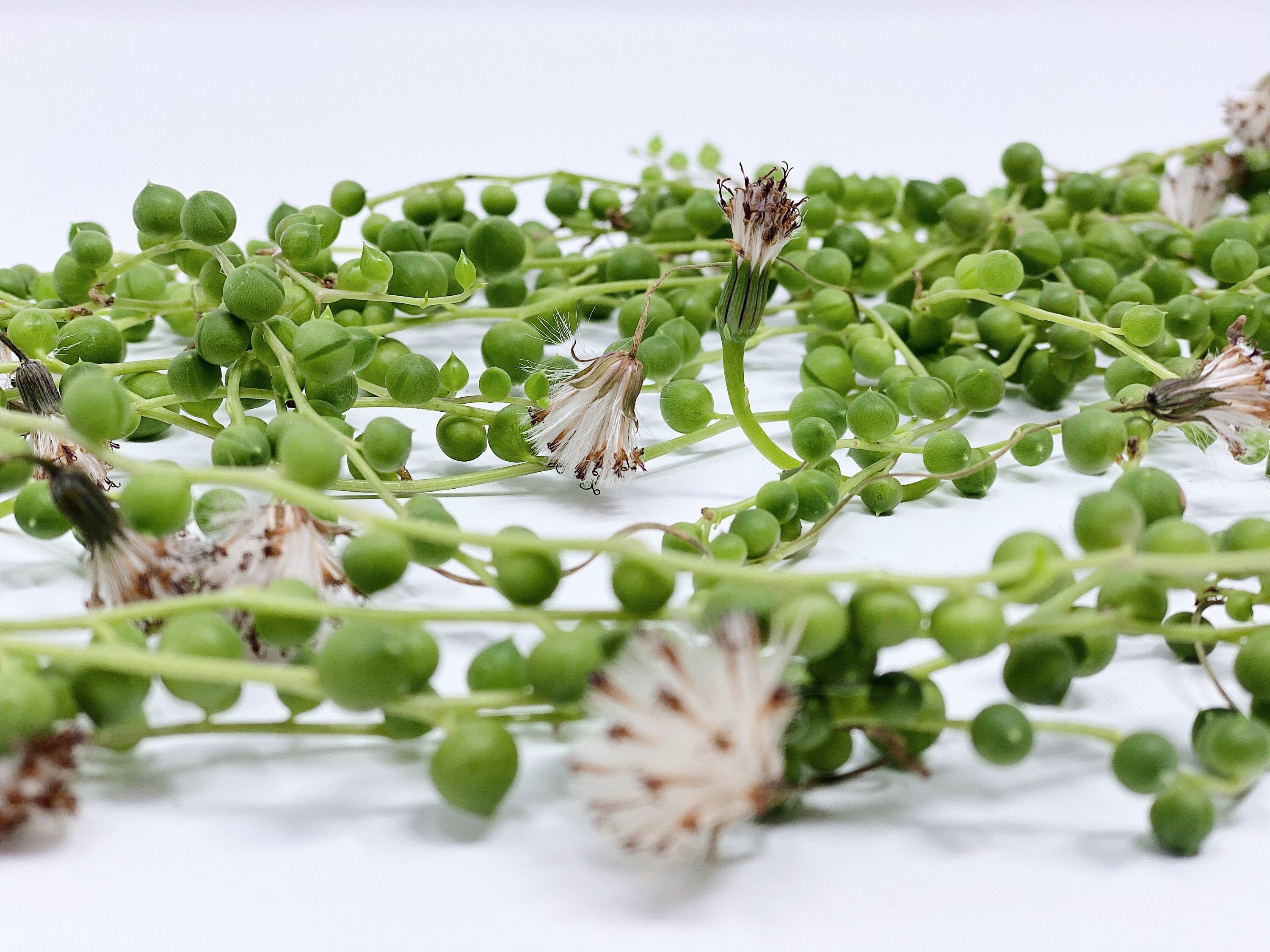
String of Pearls
Learn how to grow, water, fertilize, and propagate String of Pearls, a cascading succulent that thrives in a warm and dry environment. Find out the toxicity, toxicity, and toxicity of this plant, as well as the best indoor and outdoor conditions for it.
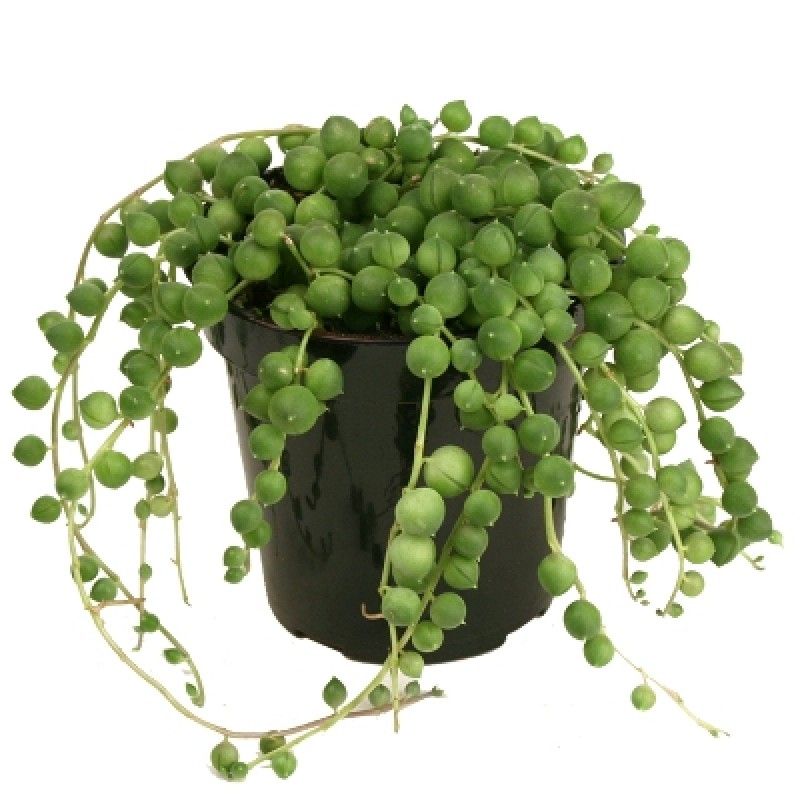
String of Pearls plant Care & Guide Bloggerstalent
String of pearls ( Senecio rowleyanus, sometimes sold as Curio rowleyanus) is a sought-after hanging succulent house plant. Its trailing stems have pea-like leaves that look like beads - hence its common name. In spring, the plant may produce small white, cinnamon-scented flowers.
:max_bytes(150000):strip_icc()/kararileystringofpearls-11-e358f583cc6b44c887609dc7b3cd1aec.jpg)
How to Grow and Care for String of Pearls Plant
When you water your String of Pearls, give them a good soak every week or two. To check, stick your finger or a wooden skewer into the soil to ensure that the first couple of inches are starting to dry out. Water thoroughly and ensure that the pot drains completely. If the tray beneath the plant has sitting water, pour it out or dry it with a.

String of Pearls Plants for Sale Free Shipping
Above: Delicate string of pearls plants start small, but tendrils can grow up to two or three feet long. Photograph via Etsy.. Also known as "string of beads" or "rosary," this succulent is a perennial vine of the Asteraceae family and is native to southwest Africa. Like most succulents, it requires very little hands-on care.

Ultimate Guide to String of Pearls Plant Care at Home Petal Republic
The string of pearls plant (or Senecio rowleyanus, also referred to as a string of beads or string of peas plant) is a succulent with stunning strings of round, bead-like leaves. The leaves actually look a lot like green peas, but the long, skinny stems the leaves grow from make it look a bit like a pearl necklace.

String of Pearls, Live Plant 4 in. Pot Alsip Home & Nursery
What soil's best for String of Pearls? Let's start at the bottom. Soil is super important for these vining peas. Okay, they aren't peas, they're succulents. But a happy String of Pearls should be plump and almost completely round, like a pea.
String of pearls...finally having some success after killing my share of these guys. I used to
Pearl string plant can't survive frost or freezing temperatures. As true desert plants, they like to be warm (70-80° F). Be cautious of cold indoor drafts that could damage the stems. During the winter, when string of pearls goes dormant, your indoor temperatures can drop down as low as 50° if necessary. If your home stays around 68° all.
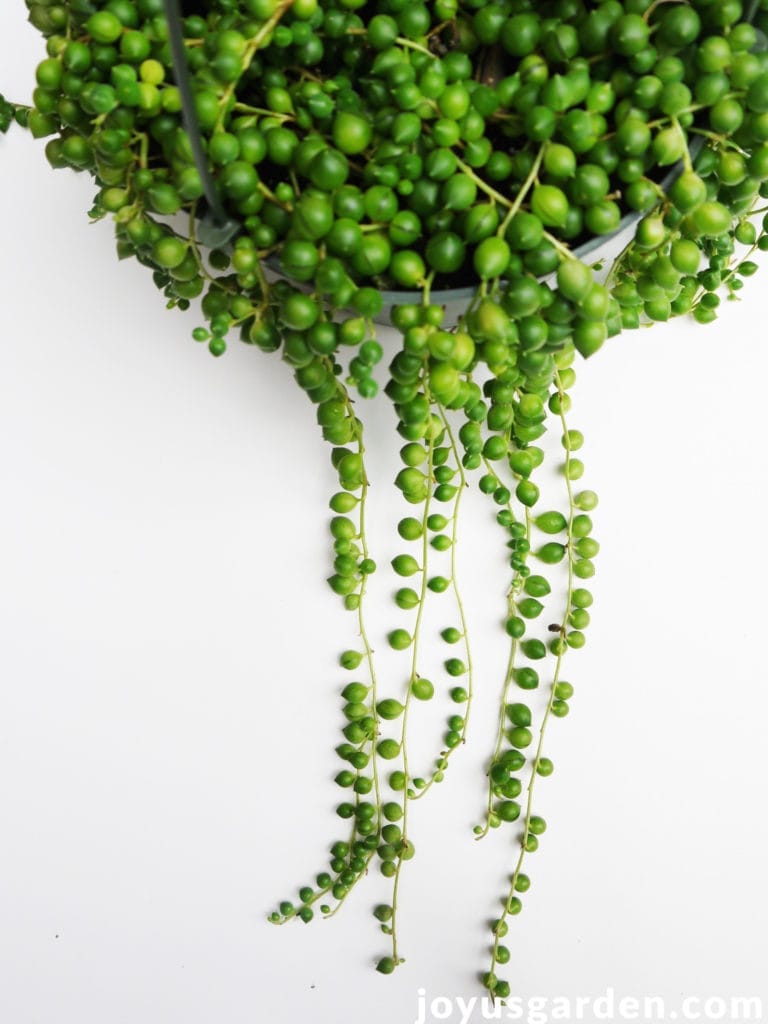
String Of Pearls Plant 10 Reasons Why Yours Isn't Growing Indoors
Take a 5-inch cutting along the string with a pair of fine-tipped scissors. Remove half of the pearls and place the string end in a glass of water to root. If you don't want to use water, plant the empty string directly into a cactus or succulent soil mix. "You can even lay it on top of the soil without removing any of the pearls," he says.
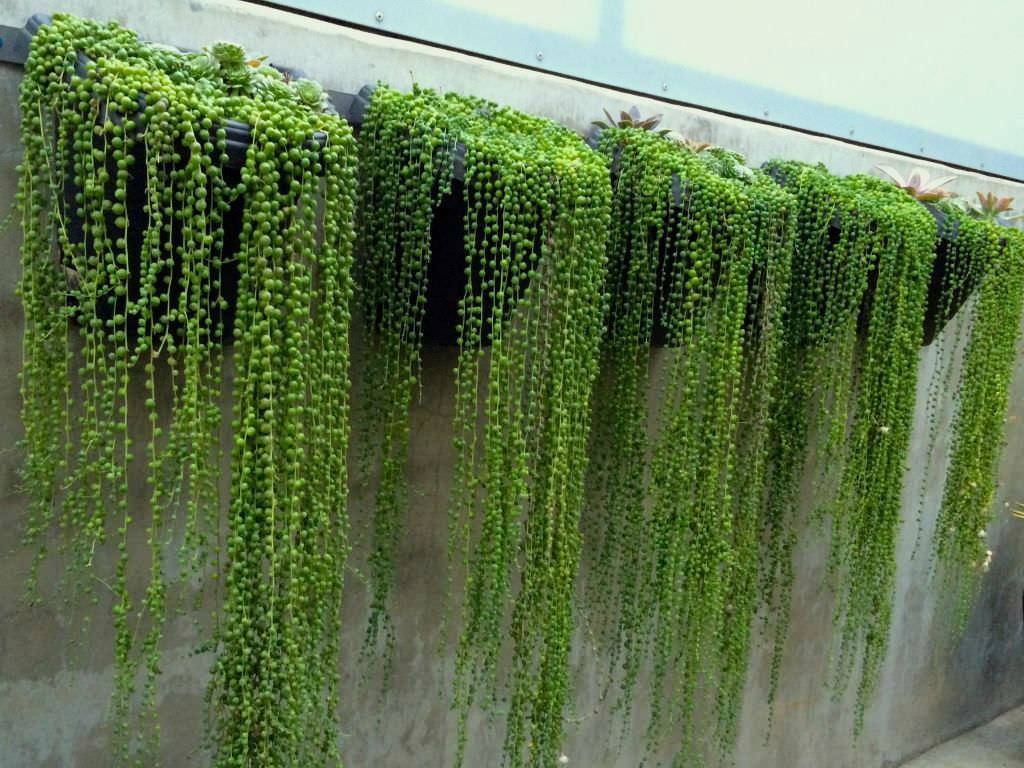
How to Grow and Care for a String of Pearls World of Succulents
String of pearls blooms in summer, producing ½ inch compound, daisy-like flowers of white discoid flowers with long red stamens and bright yellow anthers on 1½ inch long peduncles. The small flowers are not showy but are fragrant; it is said to have a sweet and spicy, cinnamon-like scent.
/kararileystringofpearls-15H-eab706c755e94831a7ecc4e92bd51a11.jpg)
How to Grow and Care for String of Pearls Plant
The string of pearls plant ( Senecio rowleyanus ), also known as string of beads or necklace plant, is one of the most striking succulents out there. This drought-tolerant plant gets its name from the appearance of its leaves, which look like pearl-sized peas strung along thin, delicate stems.
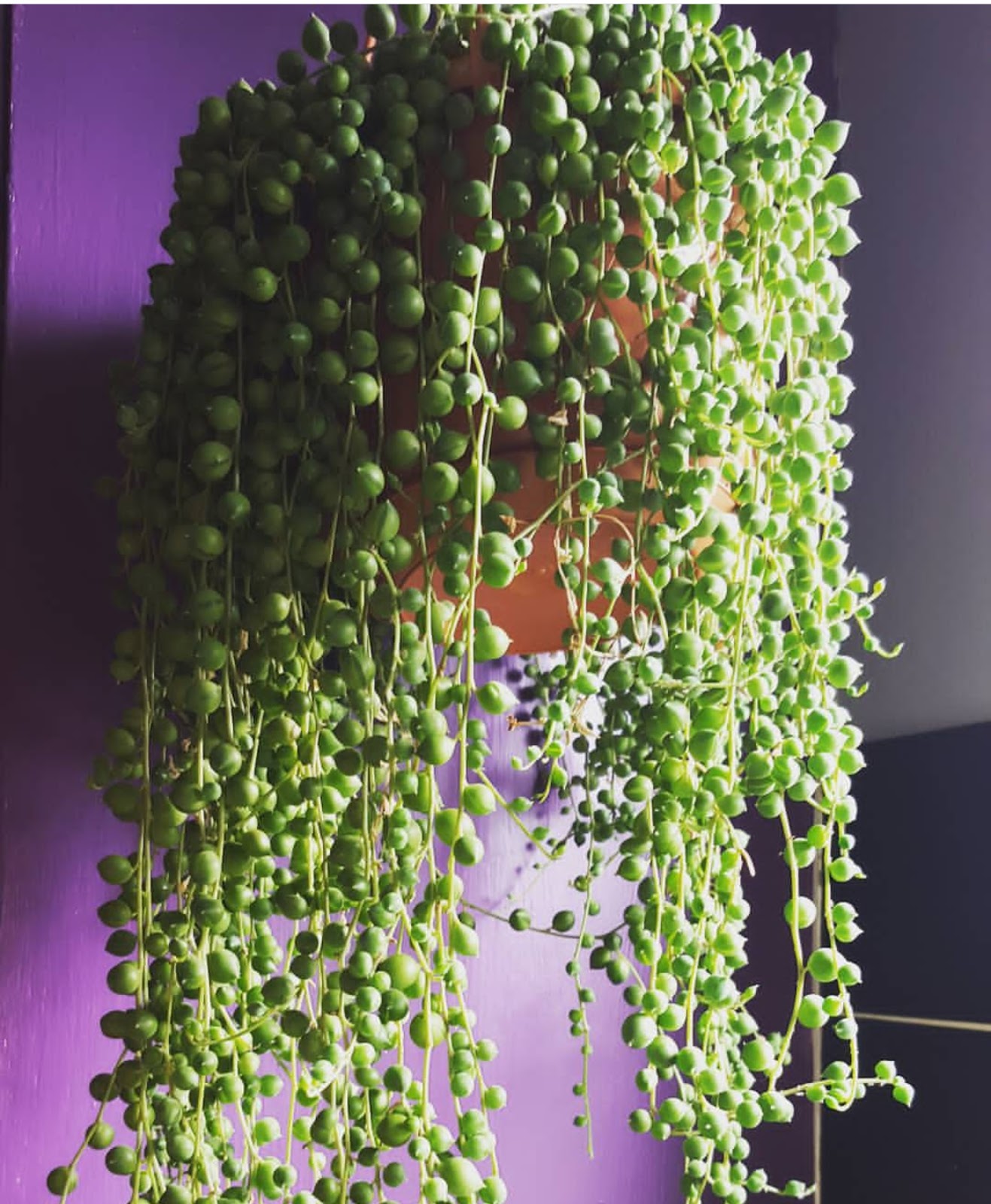
String of pearls care and propagation
String of Pearls is a true desert plant and likes warm and dry climate, just like in its homeland South Africa. The temperature at which to grow a String of pearls should be above 50° F, ideally, between 70-80°F. Don't expose them to frost or freezing temperatures.